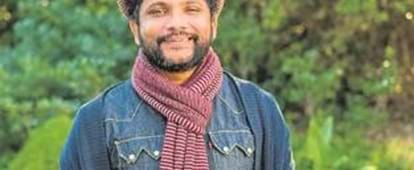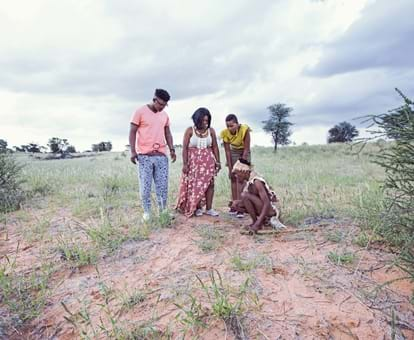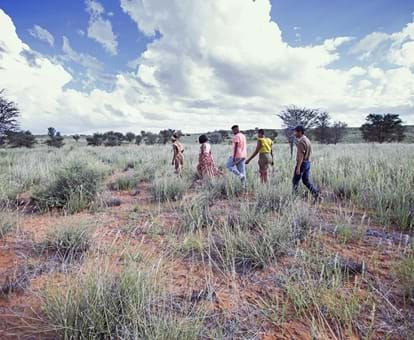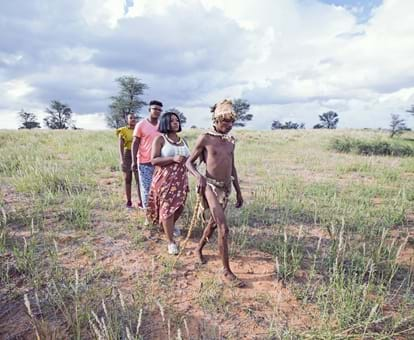By creating an account, I agree to the
Terms of service and Privacy policy
Choose your country and language:
Africa
Americas
Asia Pacific
Europe
HHow many people know that Cape Town’s original name comes from one of the first languages spoken here in South Africa, Khoekhoe, a Khoe language? Or that Table Mountain also had its own name? Cape Town’s name was ǁHui ǃGaeb, which loosely means “where the cloud meets”, and when you look at Table Mountain on an overcast day, you see how the majestic white clouds gather.
Table Mountain, which also looks like a long table, was named Huri ǂOaxa, which refers to “where the sea rises”, and when you stand on this magnificent mountain and look down on the ocean, you’ll see how it rises up. You experience a sense of awe, an appreciation of the power of Mother Nature. Our KhoeSan people believe that what you receive from nature you give back in equal amounts, that everything she gives us - her plants, her animals - are all valuable, and need to be looked after with great care. We leave as little of our own footprints in the process, because we are custodians for those who come after us.
WWe are a people with an intimate knowledge of all the watering holes, a resource we will expertly conserve for thousands of years. We are the ultimate recyclers, the people who repurposed way before repurposing would become a word. We are people at one with the oceans, who by only smelling the ocean breeze and feeling the temperature of the water, can immediately know whether today we can enter her domain or not. We call this ocean a woman because in all KhoeSan cultures, our women are respected and loved but equally feared for her power to give and take.
We are a people who have lived in harmony with nature for thousands of years and whose “signatures” can be seen throughout Southern Africa in rock paintings. Our rock paintings are not just paintings. They are ancient text that talks to cultural practices, rituals and beliefs. It’s a cinema of sorts, that moves you when you allow it to. It makes a sound, but only if you open your spiritual ears.
Thousands of KhoeSan rock paintings exist in Southern Africa and one of the most famous finds is the Blombos Cave in Blombosfontein Nature Reserve, about 300km outside of Cape Town on the Southern Cape coastline. There’s a community public rock art project, Wildebeest Kuil Rock Art Centre, on the outskirts of Kimberley, and here more than 400 engravings are conserved. The Iziko Museum in Cape Town also hosts a wonderful permanent rock art exhibition. A few weeks ago I discovered a set of murals tucked away in the parking lot of the Artscape Theatre, that speaks to our KhoiSan history.
OOne of my favourite Khoe words is kakapusa, which means to forget, and sadly what has happened as a result of our history is that our Khoe people have been forgotten. We are a people disconnected from who we are, and today we find ourselves systematically putting back the broken pieces.
We were people whose languages you no longer hear in South Africa. In Namibia however, Khoekhoe is still widely spoken, and people there live, dance and sing in the language, and connect with our ancestors. In 2018 the first Nama Cultural Festival was held, which was a feast of KhoeSan language, heritage, food and culture. It’s a must-attend in 2019, and will take place in Keetmanshoop in Namibia in May.
Yet the one thing that makes our KhoeSan people so unique is our ǁhhore ǁhare quality, which in Khoekhoe means to be welcome. So today, when people speak of the KhoeSan, we are not an extinct people. We have always been here, and our rituals, culture, identity and language continue to influence South Africa, and will do so for centuries to come.

AAbout the author
Denver Breda is a language and cultural activist, writer, photographer, poet and festival organiser. He is determined to fight for the awareness and revival of the Khoe languages as well as the survival of Afrikaans and its various dialects, such as Cape, Plattekaaps (his own version of Cape) and rural Afrikaans, as heard by his mother's stories, originally from Graaff-Reinet.
His self-published short story Boesman Myt was inspired by his mother's trip to the Cape from Graaff-Reinet in search of a better life. He has also published a collection of short stories, Stories Wat Kort is 1 and 2. He also writes for Litnet, and has his own podcast, Draadloos Virrie Raadloos.
Related articles





